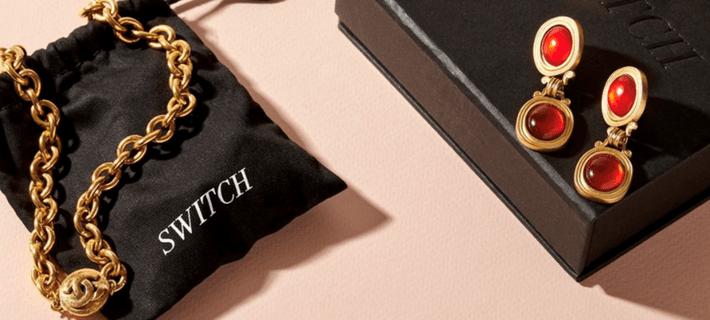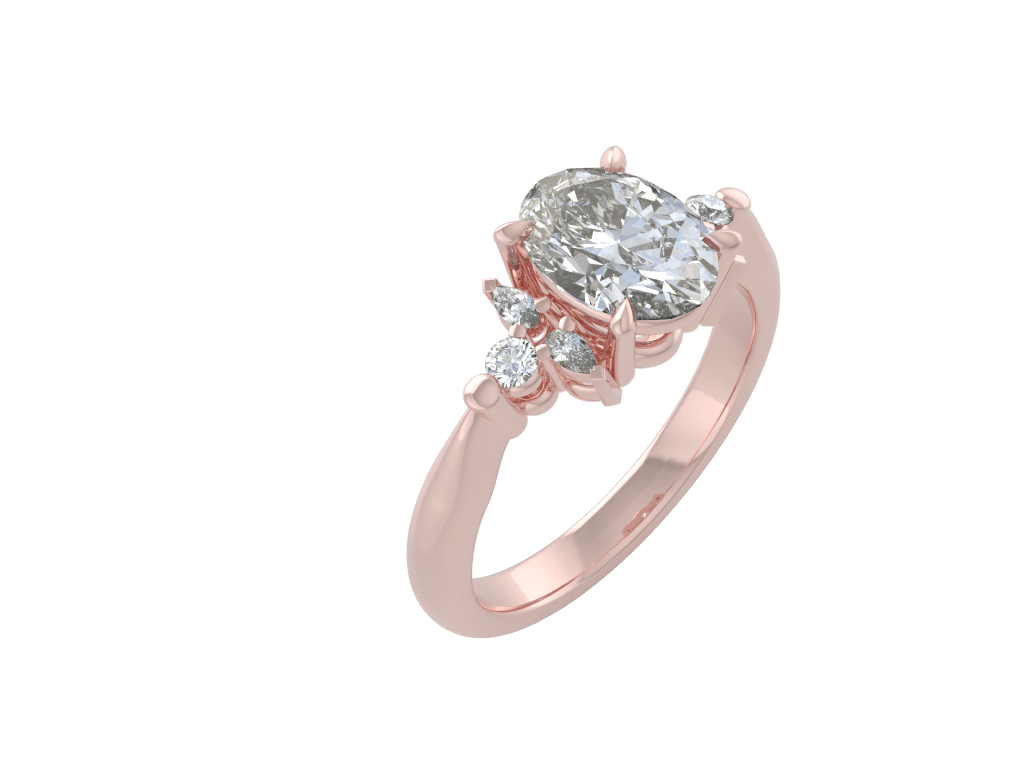Table of Contents
If you have recently picked up the art of jewelry making and have taken to it easily, it may be a hobby that you can turn into a career. From deciding on your career path to creating a business plan, going from hobbyist to professional jewelry maker may seem overwhelming. Fortunately, we have put together a list of what you’ll need to gather and think about when getting started. To learn more about the steps to take to turn your new hobby into a profession, continue reading below.
How to Become a Jewelry Maker
Discover Your Passion and Jewelry Genre
The art of jewelry making can be both a relaxing and rewarding craft. Creating something by using your hands and a few sets of tools that an individual can then cherish and wear is not a small feat.
If you are considering what you’ll need to get started on turning your jewelry-making profession from hobby to craft, you must first determine which part of the process and which career path you are passionate about. There are many different kinds of jewelry makers. Some of the different avenues that can be taken when it comes to jewelry making include(but are not limited to):
- Engagement rings specialist
- Earring jeweler
- Men’s jeweler
- Clock band maker
- Necklace and bracelet maker
- Miscellaneous jewelry items maker, such as glasses chains
- Accessories creator, such as hair clips and headbands
The first step you must take is to decide which jewelry-making path you want to take as your career’s focus. This will help you narrow your course of action, therefore helping you gain more success and a dedicated audience. If you do not yet know which jewelry type you want to commit to, consider taking some time to experiment, explore, and decide before proceeding with making this hobby your career.
Understand the Jewelry Industry and Latest Jewelry Trends
Understand the consumer shopping trends and the move towards sustainable and ethical practices in fashion. Larsen Jewellers have noted a 1,434% increase in demand for sustainable jewelry in their Ethical Trends Report.
The next step in going from hobbyist to professional jewelry maker is to understand the way that the jewelry industry operates when it comes to pricing fluctuation, the seasonal turnover of styles, and its connection to the rest of the fashion industry.
To understand the jewelry industry, consider researching financial trends for large jewelry companies such as Tiffany & Co., Cartier, Chopard, and Graff. Take a look at how their stocks and financial investors are doing, and where the projected trend of their success is going.
It can also help to look at jewelry-themed Instagram accounts with large numbers of followers that specialize in a similar jewelry-making genre that you plan to focus on. This will help you get an idea of how these companies are doing as well as the trends they are setting with their work.
Start a Sketchbook with Ideas
Once you feel like you have a relative understanding of where the jewelry industry is in its current financial and trend-setting state, you should begin to focus on your inner self and the work that you aspire to do.
Get a professional sketchbook from a local arts, crafts, and design store as well as a few high-quality sketching implements (such as pens, pencils, drafting ink, and erasers). Set aside a particular amount of time during each day for your work, which should include sitting down in a quiet spot in your house or at a coffee shop and sketching your ideas for future products and jewelry pieces.
Consider each sketch a first draft. Don’t be too hard on yourself, as you are just starting your journey from hobbyist jewelry maker to professional.
Gather the Proper Work Tools
Once you have turned your sketching practice into a habit, it is time to gather your work tools and practice making your designs. The following are the best tools for jewelry makers with new skills, along with a clean workbench, adjustable work stool, safety glasses, metal-resistant gloves, and a good light:
- Wire cutters
- Standard pliers
- Specialty task pliers
- Flat nose pliers
- Flush cutters
- Ruler
- Disk punch
- Jeweler’s saw
- A variety of wires
- Mini handheld vacuum cleaner
- Metal inscribing pen
Complete a Training Program or Apprenticeship
Once you have a steady self-practice routine for sketching your ideas and have gathered the proper high-quality jewelry-making workspace and materials, it is time to hone your craft.
The best way to learn a lot in a small amount of time and improve yourself as a jewelry maker quickly is to complete a training program or apprenticeship. Although not all cities have training programs available, many established professional jewelry makers with their own businesses and materials will take on apprentices to help with their workload. This opportunity allows the aspiring hobby jewelry maker to learn about the business and daily life of the professional while doing hands-on tasks at the same time.
Decide on Branding and Your Company Image
For jewelry hobbyists who feel that they have completed enough hands-on learning and are ready to start their own jewelry business, the next step is to decide on branding and company image. The way that a company brands itself is extremely important in how well its wares will sell, especially in the age of social media marketing and e-commerce.
For example, if you are planning on making engagement rings part of your jewelry business model, it is important to focus on branding yourself as a company that fosters love and joy. If you plan on making edgy earrings for busy women on the go, it is important to acknowledge that appealing to this ideal customer will be a huge part of your brand identity.
Build a Social Media Presence
After deciding how you plan to market yourself and your company’s brand, you will need to establish yourself online by building a social media presence.
While not all professional jewelry makers have a presence on social media, it is becoming increasingly important for the sales of newly established jewelry makers to gain an online following. Every potential follower should be considered a potential sale and even a potential return customer.
Though some professional jewelry makers market the materials, wares, and goods of their jewelry business by themselves, others choose to hire social media specialists or companies to create a comprehensive plan for them. This is a great option to choose once you have already begun to sell your jewelry and earn a profit from your work.
Cater to Your Target Audience
Part of the point of having a social media presence is to connect the company to its customers. Catering to your target audience is what will help you gain these customers, and it is therefore important to decide ahead of time who you want your customers to be.
If you plan on making jewelry for children, your target audience should not only be children but their parents. Since children do not usually have money to spend, the parents are the ones who must want to purchase your goods for their child.
For jewelry makers that plan on professionally selling their handmade jewelry to engaged couples, they must market to unmarried men and women that are in long-term relationships. This audience targeting can be done by following specific individuals on social media that cater to that demographic, using the right hashtags, or even choosing the right age bracket pertaining to your desired customer demographic.
Choose How You Will Sell Your Wares
After you have established yourself as a professional presence in the world of online marketing, decide how you will sell the jewelry that you make. The main options for jewelry sales include the following:
- Consignment in clothing shops, jewelry stores, and boutiques
- Setting up booths at local markets
- Creating up an e-commerce website
- Selling through a third party like Etsy
- Selling through your social media platform
- Opening a brick and mortar storefront for your jewelry
Write a Detailed Business Plan
When you are feeling confident and ready to start making money from your jewelry, it is time to write a detailed business plan.
You can do so either by utilizing a generic business template, or by creating your own to suit your specific and unique business needs. Two of the most common types of business plans for a new small business owner include the following:
- Traditional business plan: more detailed with specific numbers
- Lean business plan: contains only the headlines and projected numbers
Reach Out to Friends and Family
After you have decided on your jewelry genre, gathered the proper tools and materials, honed your skills, prepared your marketing plan, created a business plan, chosen your target audience, and established a social media presence, it is time t reach out to those closest to you for help spreading the word.
Reaching out to your friends and family can be helpful in not only spreading word of mouth about your new professional jewelry-making business, but doing so can also garner emotional and financial help.
Those who care about you are likely to care about your dreams and business goals, and therefore can often offer support and help. Always reach out to your support system, as being emotionally supported will help you take risks and get further with owning your own business in the long run.
See Also – Useful tips about how to choose fashion jewelry for your lover












